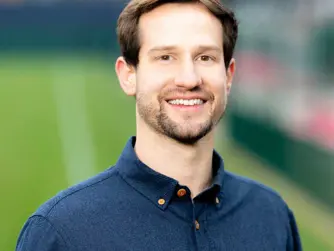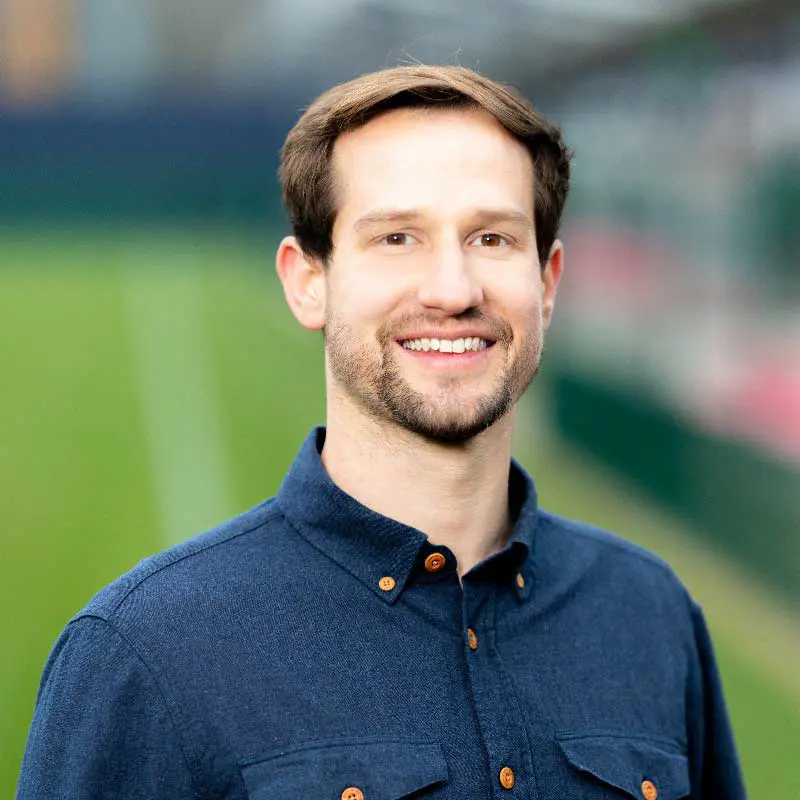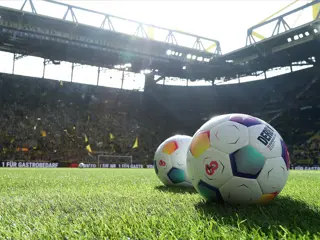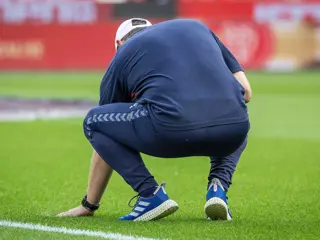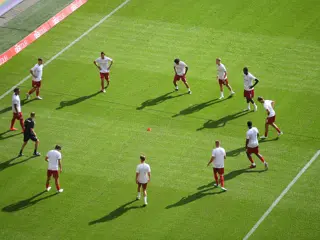Foresight
Pitch perfect – how turf helps players reach their potential
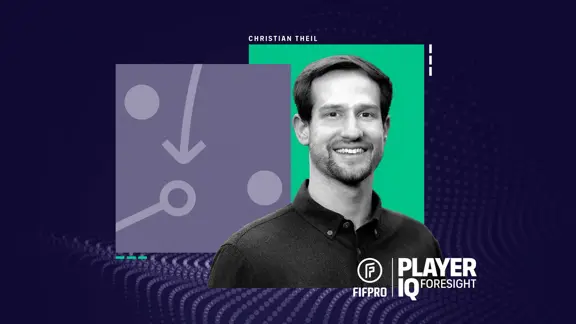
Grass covers 20 percent of the earth’s surface. It conserves water. It cleans the air. What can we learn from it?
That was the question on my mind when I contacted grounds managers in the Bundesliga, one of the world’s leading football competitions. Working at the time in precision agriculture, I was keen to meet a community that manages grass every day and understands the science behind it. And I was looking for new answers to our oldest questions: how can we live sustainably as a species, and what can we learn from plants?
Managing the 8,000 square metres of a football pitch has always been a full-time job. It calls for green fingers, an eye for the weather, and a healthy supply of patience. Today, it comes with a special responsibility.
The modern playing surface is a stage for the world’s finest athletes and a drama watched by millions. That magic green rectangle carries the hopes and ambitions – and the long-term commercial investments – of an entire club. Supporters have come to expect a bright and spotless carpet, the perfect backdrop to a 90-minute thriller. No pressure, then, on the small teams of ground staff who labour at the mercy of the weather, increasing pitch usage, and ever-shortening deadlines.
When the grounds managers replied to me, I sensed a common concern. Everyone was busy, but everyone wanted to talk. Everyone had their own techniques, but everyone faced the same questions: how do we support the team and keep the players safe? How do we grow something that will last? And how do we manage a dozen pitches over a single day? My own concern lay with sustainable land use, but I was starting to see common ground.
As they kept check on their playing surfaces, some grounds managers were scribbling their work over a dozen different whiteboards – one for each pitch. Some were using technologies from the construction industry, almost half a century old, as they gathered and recorded their data. Coming from a world where artificial intelligence was helping us to model the climate and grow plants more sustainably, I began to see how we could work together.
When I launched turfcoach in 2021, my questions had become a little clearer: how could we use the science of agriculture and the power of artificial intelligence to produce the perfect football pitch? How could we work with the grounds managers to understand their turf?
The turf – that is where it all starts. Where the grass puts down its roots, where the footballer plants his studs. To make a better pitch, we need to understand how the turf responds to the world around it, starting with the climate. This is why we use artificial intelligence.
When we scan a playing surface, we do so non-invasively. No-one has to cut into the pitch or dig holes. We use machine-learning to process the data we receive, allowing us to create a deep and rich picture of the turf and how it behaves.
To help grounds managers, we integrate all their sensors and tools into a single, customised piece of software. We make their lives simpler. We make grounds management more sustainable. We reduce costs.
We see ourselves as part of the sport. We want clubs to feel proud of their pitch – it is their home, after all – and we want athletes to trust and enjoy every inch of the playing surface.
When footballers pull on their club’s jersey and step onto the turf, they are turning up for work. The pitch is where they do their job. Like any workers in any industry, they have the right to health and safety in the workplace. But they also face a particular risk, one that threatens to shorten their career: serious injury.
How does the playing surface affect the risk of injury, and how can our technologies help?
In the split-second footballers turn and sprint, they engage the turf beneath their feet. Their speed and performance – and the risk of injury – depend on the playing surface. The various features of a pitch affect how players activate their muscles: as a grass surface becomes softer or harder, it influences their runs, turns, and movements over an entire game.
What happens when the player’s shoe meets the surface of the pitch is critical. High rotational traction more than doubles the risk of injury. It can tear or sprain the anterior cruciate ligament (ACL), keeping players on the sidelines for months at a time. Critically, women’s footballers are two to eight times more likely to suffer from ACL injury than their male counterparts.
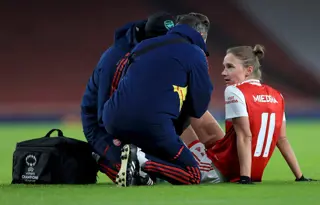
If we want to reduce injuries that are caused by the playing surface, we need to understand every inch of the turf. Our technologies help clubs and players to do just that. By analysing every critical variable – from surface hardness to soil moisture – players and coaches can quickly adapt to changing conditions. If needed, we can scan the entire pitch in the minutes before a match.
Our long-term goal remains the same: to develop uniform pitches, where players feel confident about every blade of grass.
If we can help clubs and players to reduce injuries, we begin to answer the big questions that brought us here in the first place – the ones I was asking when I met the Bundesliga’s ground managers. How can we produce playing surfaces that are safe, sustainable, and good for the sport? How can we help athletes to become the best version of themselves? And how do we take this vision around the world, so that every region and every club can one day enjoy the perfect pitch?
Everything starts with the turf. If we want a football that is democratic, open to all, and sustainable, then we need playing surfaces that are up to the job: intelligent, resilient, and alive to the human needs of every player. This is what the grass was telling me.
Christian Theil
Christian Theil is CEO of turfoach. The company combines agricultural expertise and sport science with the power of AI. With the help of public funding from the European Union and the German Federal Government, the company has assembled a talented team of experts who continue to support its rapid growth trajectory. In September 2023, turfocach was awarded Best Sports-tech Start-Up at the World Football Summit. Prior to founding turfcoach in 2021, Christian developed his expertise working in precision agriculture and sustainability.
